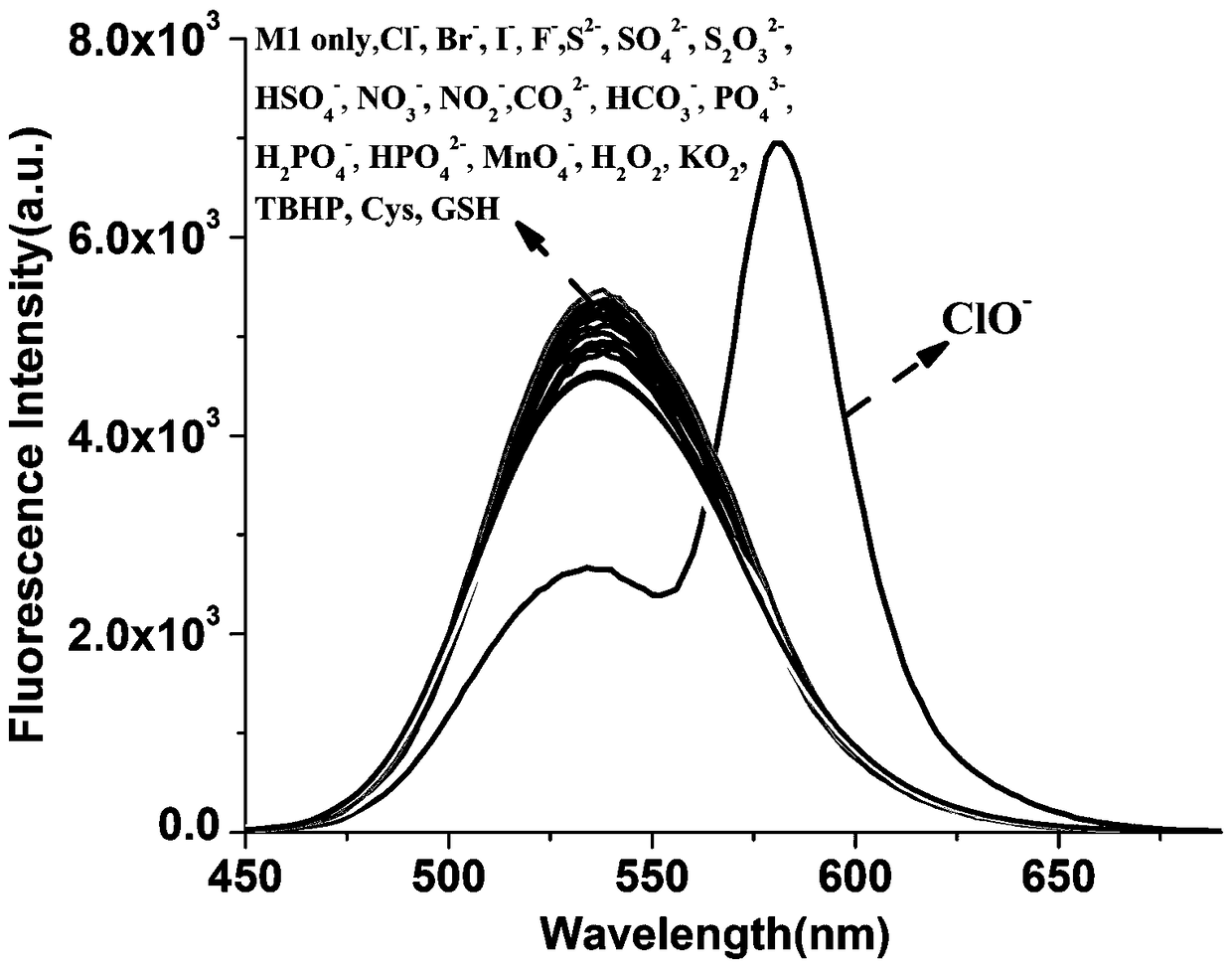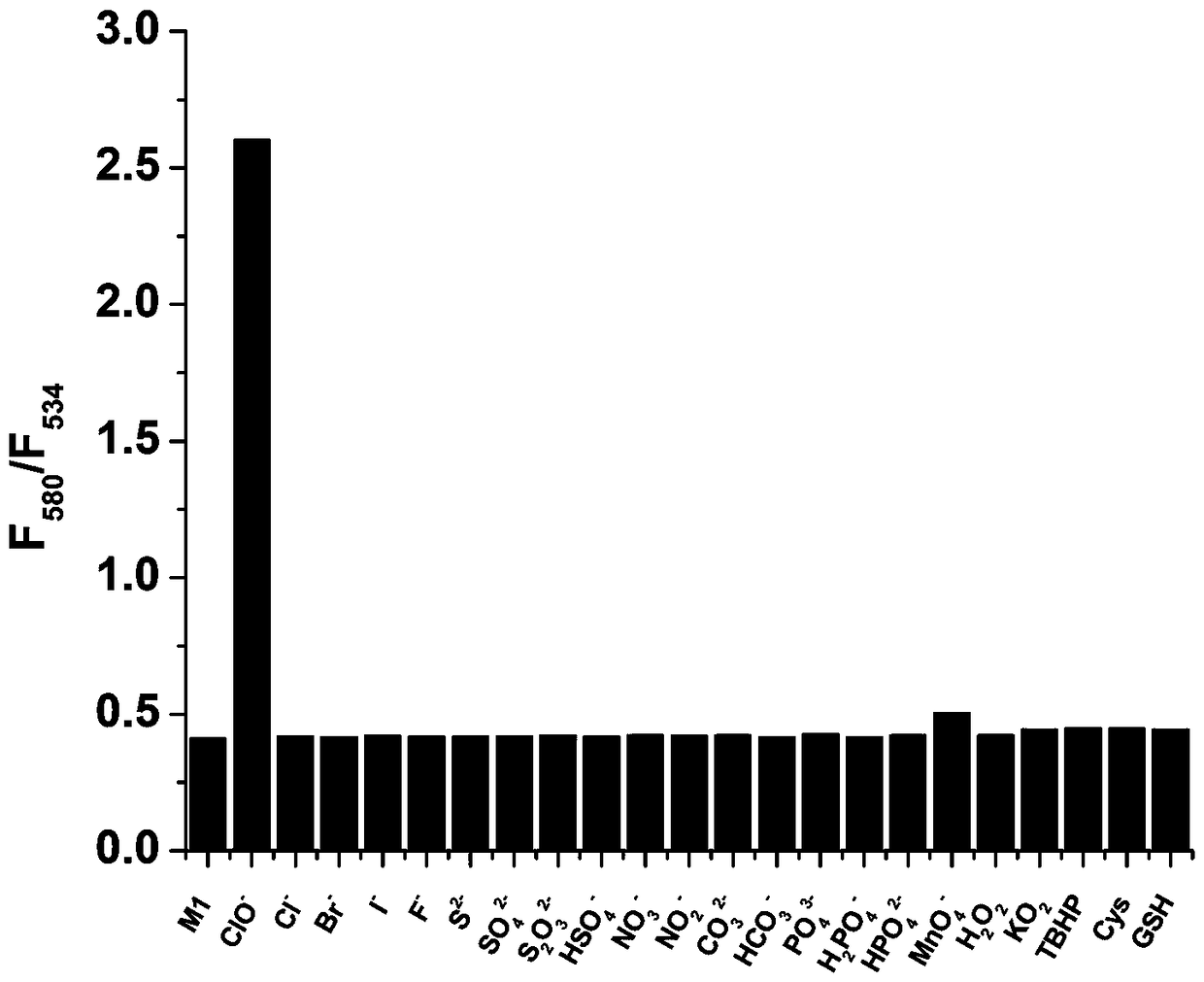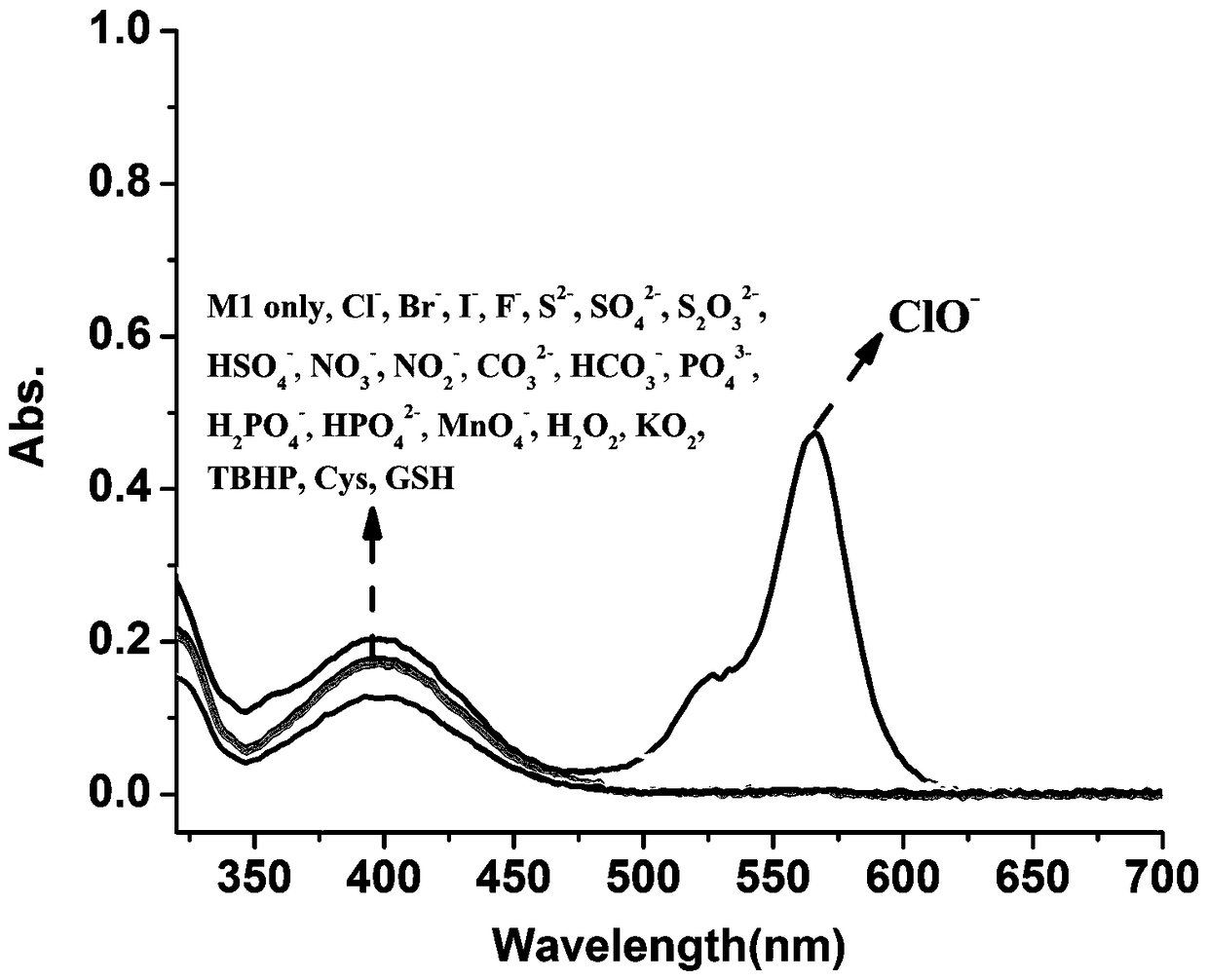Method for fluorescence ratio detection of hypochlorite ions
A technology for the detection of hypochlorous acid and hypochlorite, which is used in fluorescence/phosphorescence, measurement devices, material analysis by optical means, etc. The effect of yield
- Summary
- Abstract
- Description
- Claims
- Application Information
AI Technical Summary
Problems solved by technology
Method used
Image
Examples
preparation example Construction
[0045] The preparation steps of the probe M1 used in this application are:
[0046] S1. In a 50 mL single-necked flask, under stirring at room temperature, add 3.0 mL of hydrazine hydrate solution dropwise to 30 mL of ethanol solution containing 1.2 g of rhodamine B hydrochloride, heat to reflux for about two hours, and detect the reaction by TLC After completion, cool to room temperature, remove the solvent under reduced pressure to obtain a red solid, add about 50 mL of dichloromethane to completely dissolve the solid, wash the system with saturated NaCl solution (10 mL) three times, dry the organic phase with anhydrous sodium sulfate, filter, and depressurize The solvent was removed to obtain 1.03 g of light yellow solid product which was intermediate 1, and the yield was 90%.
[0047] S2. In a 50 mL one-necked flask, dissolve commercially purchased 4-bromo-1,8-naphthalene anhydride (413.8 mg, 1.5 mmol) and morpholine (0.2 g, 2.3 mmol) in 25 mL of ethylene glycol monomethyl...
Embodiment 1
[0057] A HEPES buffer solution with a concentration of pH=7.4 and 10 mM was prepared, and a mixed solution A with a volume ratio of 4:1 was prepared with acetonitrile, and a probe M1 solution with a concentration of 1 mM was prepared with acetonitrile. The selectivity of probe M1 to hypochlorite was investigated by fluorescence spectrometer. as attached figure 1 As shown, under the excitation condition of excitation wavelength of 420 nm, the single probe M1 (10 µM) only has a strong fluorescence emission intensity at 534 nm in the mixed solution A, when adding hypochlorite (100 µM) After that, the fluorescence emission intensity at 534 nm was significantly reduced, and the fluorescence emission intensity at 580 nm was significantly enhanced. However, when other analytes (100 µM) were added, the fluorescence emission intensity of the solution system was different from that of the single probe system. Compared with no significant changes. attached figure 2 For the above res...
Embodiment 2
[0059] A HEPES buffer solution with a concentration of pH=7.4 and 10 mM was prepared, and a mixed solution A with a volume ratio of 4:1 was prepared with acetonitrile, and a probe M1 solution with a concentration of 1 mM was prepared with acetonitrile. The selectivity of probe M1 to hypochlorite was investigated by UV-Vis spectrometer. as attached image 3 As shown, the single probe M1 (10 µM) only has a strong UV absorption intensity at 398 nm in the mixed solution A, and when hypochlorite (100 µM) is added, the UV absorption intensity at 566 nm is significantly However, when other analytes (100 µM) were added, the UV absorption intensity of the solution system did not change significantly compared with the fluorescence emission intensity of the probe system alone. attached figure 2 For the above results, the ratio of UV absorption intensity (F 566 / F 398 ) histogram. The above experimental results show that the probe has good specificity and selectivity for hypochlorit...
PUM
| Property | Measurement | Unit |
|---|---|---|
| Concentration | aaaaa | aaaaa |
Abstract
Description
Claims
Application Information
 Login to View More
Login to View More - R&D
- Intellectual Property
- Life Sciences
- Materials
- Tech Scout
- Unparalleled Data Quality
- Higher Quality Content
- 60% Fewer Hallucinations
Browse by: Latest US Patents, China's latest patents, Technical Efficacy Thesaurus, Application Domain, Technology Topic, Popular Technical Reports.
© 2025 PatSnap. All rights reserved.Legal|Privacy policy|Modern Slavery Act Transparency Statement|Sitemap|About US| Contact US: help@patsnap.com



